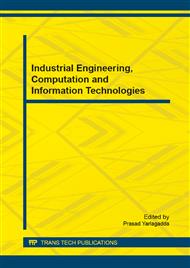p.110
p.114
p.119
p.124
p.129
p.136
p.141
p.145
p.150
A Method for RAID Availability Analysis Based on Bernoulli Trials
Abstract:
With the processing speeds of processors increasing rapidly, the inefficiency of disk I/O performance has been becoming the bottleneck of computer systems and network transmission. So, Redundant Arrays of Independent (or Inexpensive) Disks (RAID) with the purpose of promoting disks parallel accessing , disks space utilization and user data availability has been adopted by DAS and SAN, and has been applied widely. However, the more quantity and capacity that disks have, the more mistakes that would take place, so RAID availability analysis has become an important and urgent issue. The paper proposed a set of availability computational modeling for RAID storage system via Bernoulli trials and binomial distribution. On the basis of it, it can be analyzed that combination orders and methods have an effect on RAID availability in the state of mixed combination; it also can be analyzed that disk quantity is associated with RAID availability. Both of them provide powerful decision support and theoretical foundation for user selecting RAID construction solution, and help users save cost of storage.
Info:
Periodical:
Pages:
129-135
Citation:
Online since:
December 2014
Authors:
Price:
Сopyright:
© 2015 Trans Tech Publications Ltd. All Rights Reserved
Share:
Citation:


